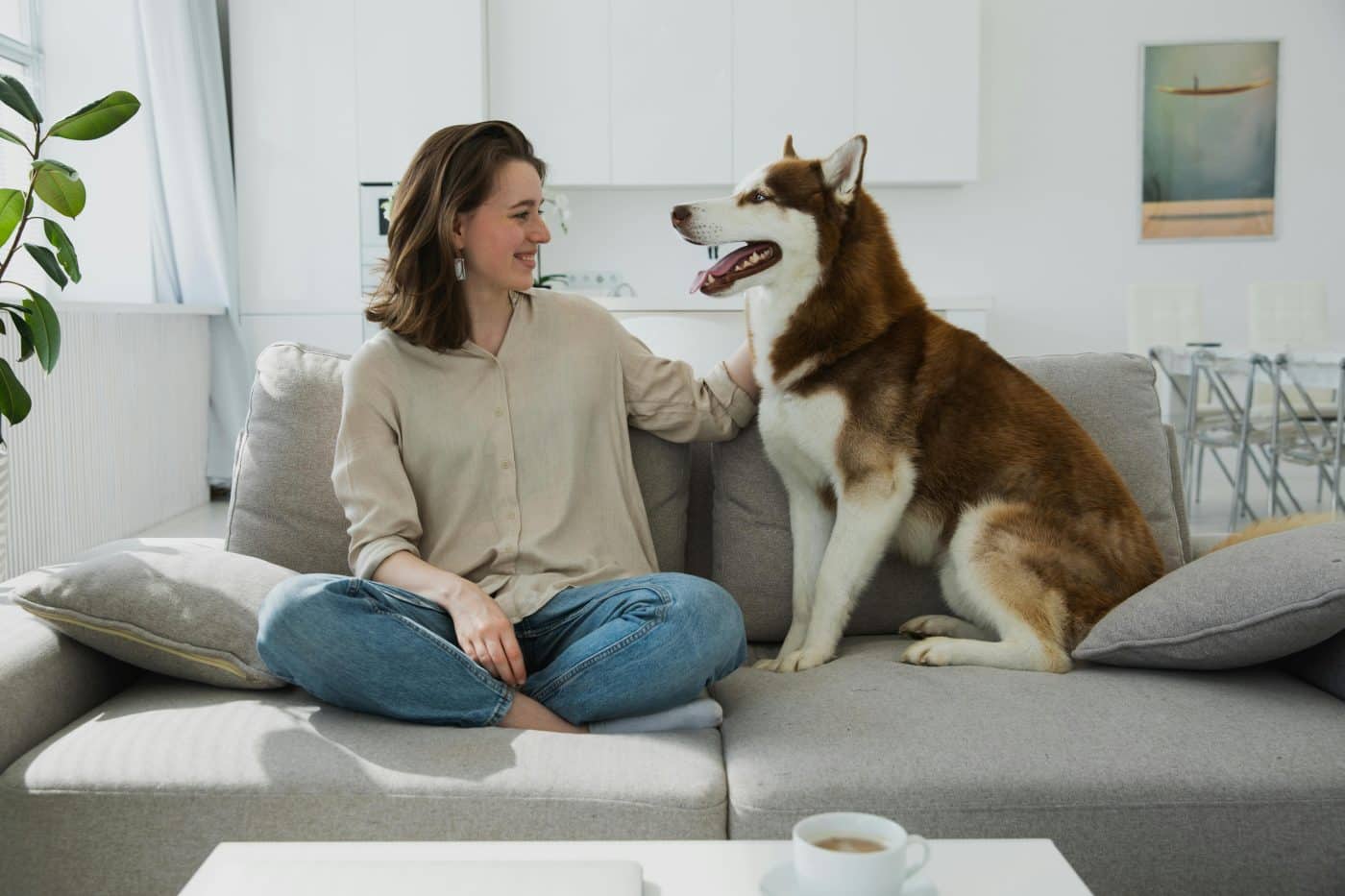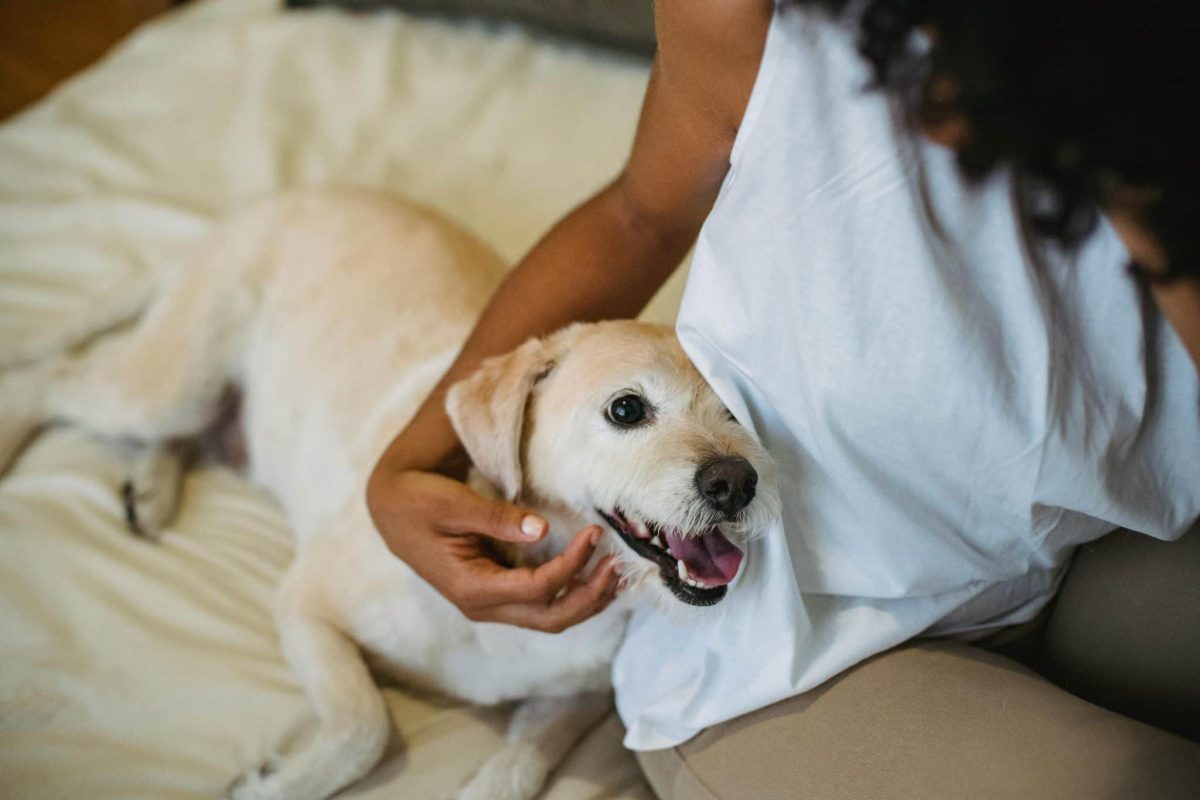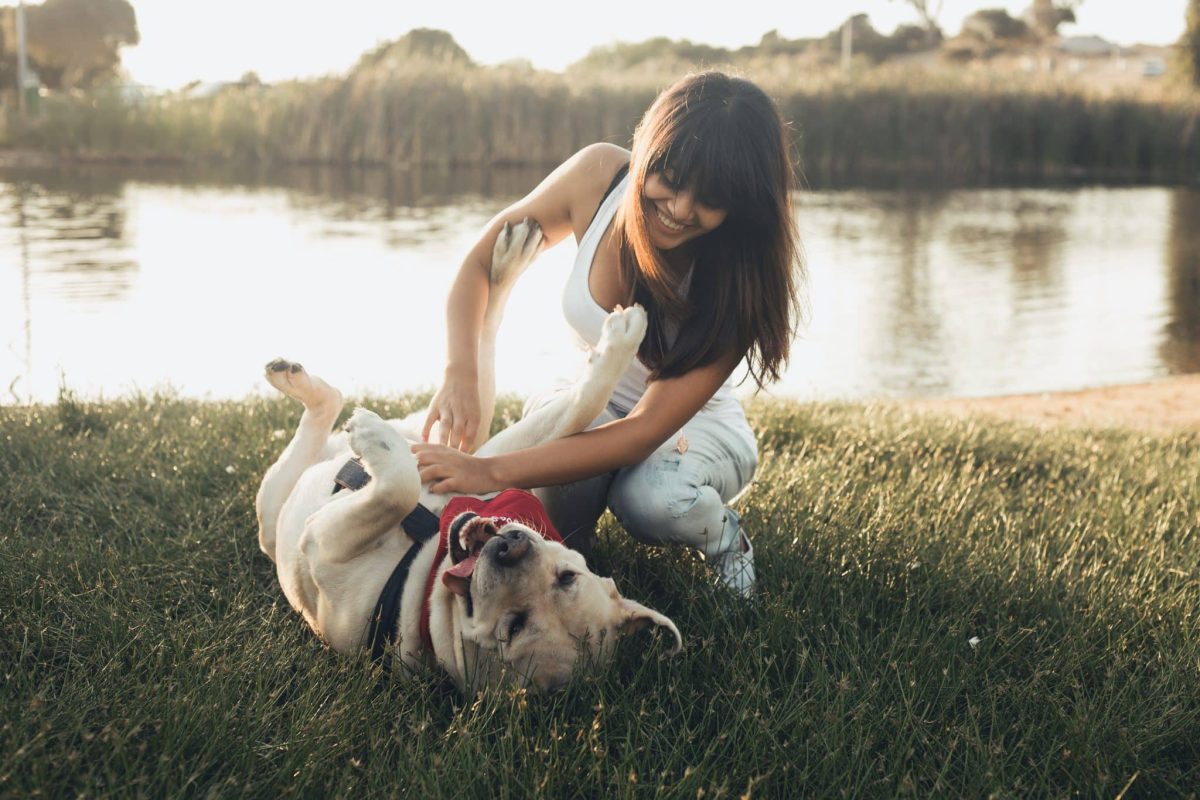 Shutterstock
Shutterstock
Dogs have long been recognized as our loyal companions, but their ability to understand us goes far beyond basic training or following commands. Whether it’s reading our emotions, interpreting our actions, or even responding to our subtle cues, dogs exhibit a remarkable ability to connect with us. It’s as though they can truly “get” us on a deeper level, and this connection is more than just instinctual—it’s based on thousands of years of co-evolution between dogs and humans. Here are nine surprising ways dogs demonstrate their exceptional understanding of us.
They Can Read Our Facial Expressions
 Shutterstock
Shutterstock
Dogs have an impressive ability to read human facial expressions, allowing them to distinguish between different emotions like happiness, anger, or sadness. Through their keen observation skills, they can interpret the emotional content of our faces, responding with behaviors that reflect their understanding. For example, when they see us smiling or relaxed, they may approach us in a friendly, playful manner. In contrast, a furrowed brow or frown may cause them to act more subdued or cautious. This sensitivity to facial cues helps dogs bond with their owners, offering emotional support when needed or sharing in our joy during happier moments.
They Know Our Voice Tone
 Shutterstock
Shutterstock
Dogs are highly sensitive to the tone of our voice, recognizing that it conveys more meaning than the words themselves. Whether we’re speaking in a calm, soothing voice or a stern, commanding tone, dogs can interpret the emotional context and adjust their behavior accordingly. For instance, when we use a high-pitched, excited tone, our dogs may become enthusiastic, wagging their tails and jumping around. Conversely, if we speak in a lower, firmer tone, dogs tend to become more focused, calm, or even submissive. This ability to interpret vocal tones enables dogs to respond appropriately to our moods, enhancing communication and the bond between us.
They Can Sense Our Stress and Anxiety
 Shutterstock
Shutterstock
Dogs are highly intuitive when it comes to sensing human emotions, particularly stress and anxiety. Through their acute sense of smell and ability to read body language, they can detect subtle changes in our scent, posture, and behavior. When we feel anxious or stressed, dogs often pick up on these shifts and respond by offering comfort or staying close to us. Some dogs may become more attentive, resting their head on our lap or curling up beside us, while others may act more subdued, sensing that we need space. This emotional sensitivity makes dogs excellent companions, as they provide comfort during difficult times without us even needing to ask.
They Understand Our Routine and Habits
 Shutterstock
Shutterstock
Dogs thrive on routine, and they are exceptional at recognizing the patterns of our daily lives. Over time, they learn when it’s time for walks, meals, or play, and they can anticipate our actions even before we’ve made them. For example, many dogs will start pacing when they know it’s nearly time for their daily walk, or they’ll sit by their food bowl when it’s close to meal time. This deep understanding of routine helps dogs feel secure and comfortable in their environment, knowing what to expect. It also strengthens the bond between dog and owner, as dogs learn to sync their behaviors with our daily rhythms.
They Can Understand Our Gestures
 Shutterstock
Shutterstock
Dogs are highly adept at understanding human gestures, whether they are as simple as a wave of the hand or as complex as pointing in a specific direction. Their ability to read body language goes beyond the typical “sit” or “stay” commands, and they can follow non-verbal cues with remarkable accuracy. For instance, a dog might follow your pointed finger or glance in the direction you’re looking. This skill likely developed as a result of our long history of cooperation with dogs, with gestures becoming a primary mode of communication. Dogs’ understanding of gestures allows them to navigate interactions with us more fluidly and intuitively.
They Can Tell When We’re Angry
 Shutterstock
Shutterstock
While dogs may not fully understand the exact words we say when we’re angry, they are highly attuned to the emotional content conveyed through our body language, tone of voice, and facial expressions. When we’re angry, dogs can sense the tension in our posture and the sharpness in our tone. In response, they may become more submissive, retreating to a corner, or they might act in a way that seeks to appease us, such as licking our hands or sitting quietly. Some dogs may even avoid us altogether, understanding that our anger is not directed at them. Their sensitivity to our emotions helps them react in ways that prevent conflict and maintain harmony in the household.
They Recognize Our Scent
 Shutterstock
Shutterstock
A dog’s sense of smell is incredibly powerful, allowing them to detect subtle changes in our scent that reflect our physical and emotional state. When we’re stressed, sick, or excited, dogs can often detect these changes long before we consciously realize them. This incredible olfactory ability helps dogs understand us in ways that go beyond visual or auditory cues. For instance, when we’re feeling ill, dogs may become more attentive or try to stay close, sensing that we need extra care. Likewise, when we’re happy or energized, dogs often pick up on our scent and become more playful or affectionate. This ability to recognize and respond to our scent strengthens the bond between us, making dogs uniquely equipped to support us emotionally.
They Mirror Our Emotions
 Shutterstock
Shutterstock
Dogs are highly empathetic animals and often mirror the emotions of their owners. This behavior is particularly evident in the way dogs react to our moods. When we’re happy, energetic, or excited, dogs often mirror those emotions by becoming more playful, wagging their tails, or jumping around. On the other hand, when we’re sad or anxious, dogs may respond by becoming more subdued, offering comfort by lying close to us or gently licking our faces. This emotional mirroring is a key part of the connection between dogs and humans, allowing dogs to be in tune with our emotional states and provide the support we need.
They Can Sense When We’re Upset
 Shutterstock
Shutterstock
Dogs are incredibly sensitive to changes in our emotional state, especially when we’re upset. Whether we’re sad, anxious, or frustrated, dogs can often sense our distress and respond in a way that shows their concern. They may approach us with comforting gestures, like resting their head on our lap, licking our faces, or curling up beside us. Some dogs even become more alert when their owners are upset, sensing that something is wrong. This ability to detect emotional shifts makes dogs remarkable companions, as they offer comfort and companionship when we need it most, intuitively knowing how to make us feel better.
The Secret Minds Of Dogs Revealed
 Shutterstock
Shutterstock
Dogs have an extraordinary ability to understand us, making them incredible companions. Whether it’s reading our facial expressions, responding to our tone, or sensing when we’re upset, dogs seem to always know exactly what we need. Their sensitivity to emotional cues, ability to mirror our feelings, and anticipation of our actions show just how in tune they are with us. This deep connection is a testament to the bond we’ve shared with dogs for thousands of years, proving that our dogs truly “get” us.

 1 month ago
15
1 month ago
15


















 English (US) ·
English (US) ·